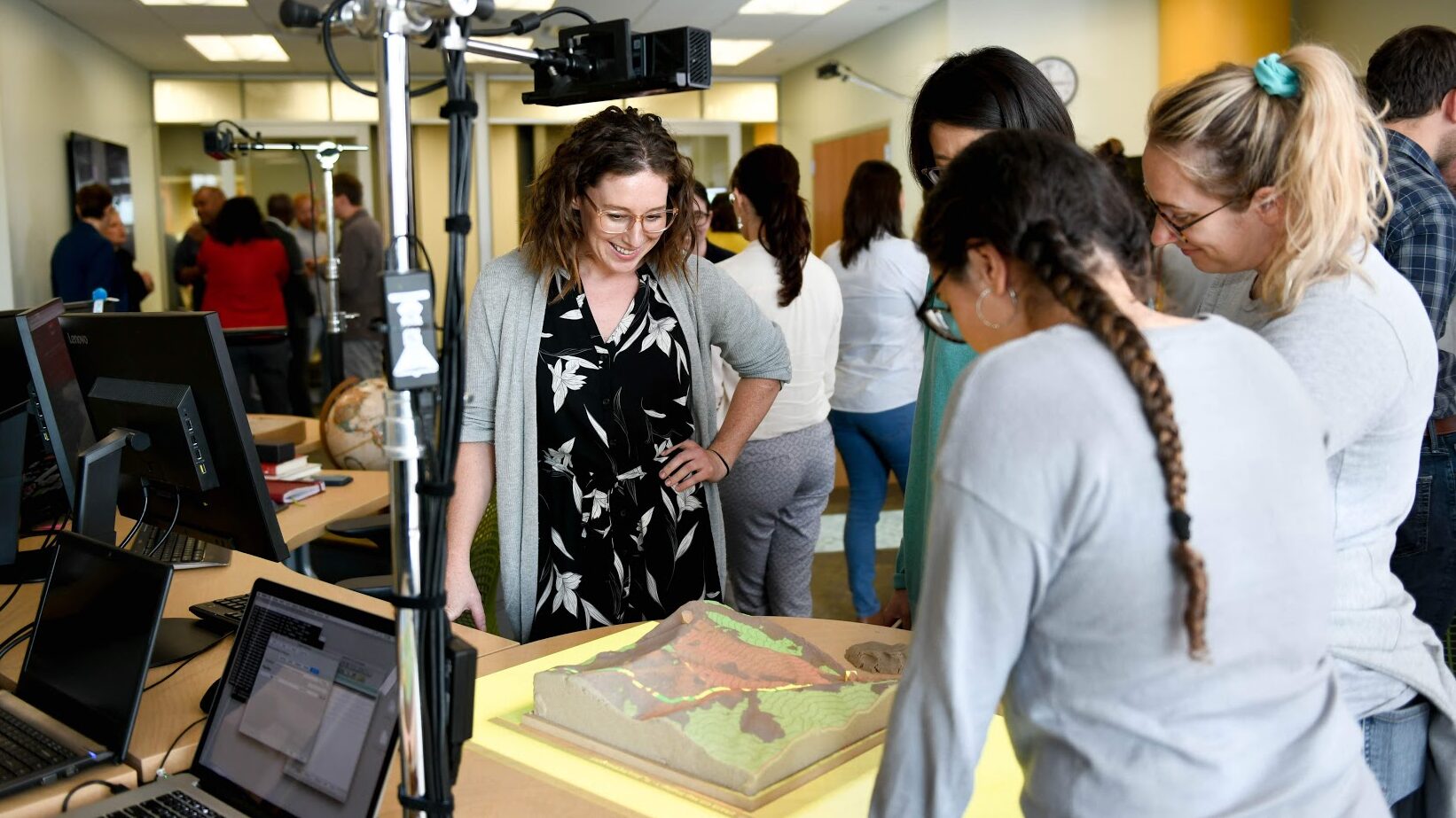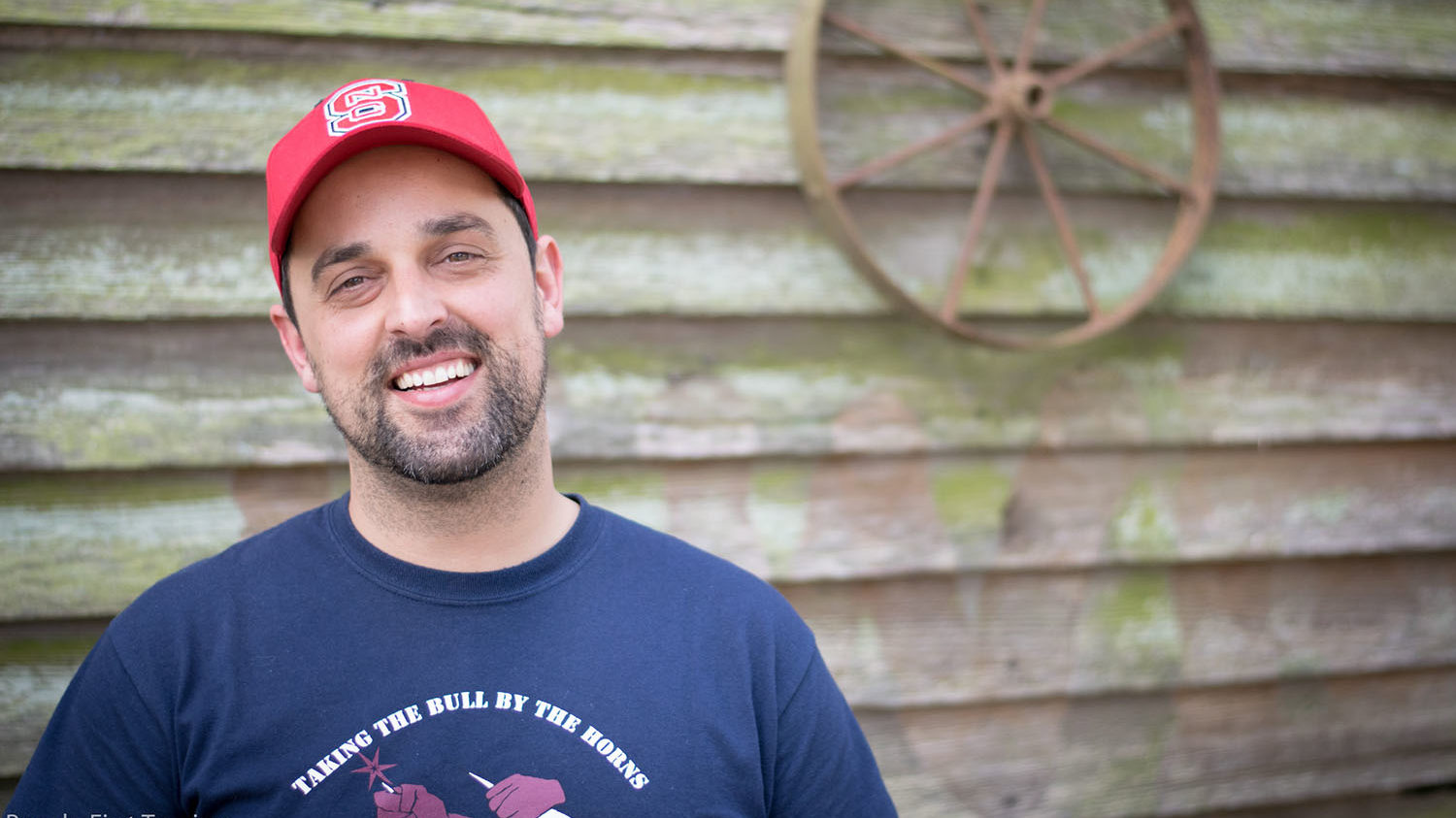Alexander Kapatos

Can Doctoral Student Alexander Kapatos Help Deliver a Knock-Out Punch to Lymphoma?
According to news reports this year, the most promising cancer therapies and drugs work by engaging our own immune systems in battling disease.
All signs point to the fact that graduate student Alexander Kapatos’ research in cancer immunotherapy is potentially a breakthrough therapy. Imagine this headline: Cancer Vaccine Targets Lymphoma.
Working under Professor Paul Hess in NC State’s Hess Lab, Kapatos is involved with research to create a cancer vaccine for T cell lymphoma. Similar research has been conducted with B cell lymphomas, Kapatos explains. Researchers have long sought the means to stimulate the body of a cancer patient in order to seek and destroy cancerous cells.
“A common term used in this field is ‘tumor antigen’—basically a molecule present on tumor cells which the immune system can target,” Kapatos says. Cancers involving cells of the adaptive immune system (like T cell lymphoma) possess a receptor idiotype. The idiotype is unique to each T cell, he explains. “Therefore, it would be present on every cancerous cell, because they all come from a single cell.” Unlike B cells, T cells do not change—a key difference.
“Aside from expressing their receptors at the surface of a cell, B cells can also secrete their receptors (as antibodies). Also, while once a functional T cell receptor is made it does not change, B cell receptors undergo a process known as affinity maturation after they are made.”
In a healthy person’s immune response to a pathogen, affinity maturation is a good thing, says Kapatos. “Think of it as fine-tuning the specificity of the response. However, this also changes the receptor, and as you can imagine, if we are targeting this as a tumor antigen, any changes may allow the cells with an altered receptor to escape.”
According to Kapatos, T cell cancers do not alter their receptors and therefore may be less evasive. “So it has been proposed that T cell cancers may be a better target for this type of immunotherapy. That is why Paul Hess wanted to go down this road.”
Cancer immunotherapy is a rapidly growing, promising field of research, Kapatos explains. “Advances in science and medicine are making it possible to tailor-fit treatments for individual patients. I think this is a great example.”
In his view, the human immune system possesses an elegant design. During his first immunology course as an undergraduate at Queens University, Kapatos marveled at the body’s ability to do what it does, with impressive efficiency. He told his parents, “If you were an engineer designing an immune system you would almost do it the way it is now.”
If Kapatos realizes his post-doctorate dream, he will do what his major professor, Hess, does: “To be in research and also have hands-on work with clients as a vet.” Hess holds both a DVM (Doctor of Veterinary Medicine) and a Ph.D.
Kapatos currently works part time at a Raleigh animal hospital while completing his doctorate in comparative biomedical science. “I get hands-on research there. We see dogs come in with all kinds of tumors.” His dog (named Zeus) is a German Shepherd/Irish Wolfhound mix, and Kapatos pulls up an images of his pet on his phone. Hess owns a Golden Retriever,
a breed known to be particularly susceptible to lymphoma. So, it is no accident that lymphoma has figured into the team’s research.
“There is a little peptide that could be presented to healthy T cells by the cancerous cells, and healthy cells can potentially recognize and respond to it—a cell based cancer therapy, an anti-T-cell T cell. If we discover the specific little peptide, then you can vaccinate for it.” Kapatos is most hopeful that he will help develop a new immunotherapy to treat certain cancers, as well as a treatment protocol to supplement existing ones. “A dog comes in with enlarged lymph node, is diagnosed with T cell lymphoma and gets chemotherapy,” he explains. “You kill the cancer off, but not really. Some cancerous cells are not eliminated by chemotherapy. This would be a way, after chemotherapy, to come in and kill off all the stragglers.”
While Kapatos is only 27, he has considered mortality more than other twenty-somethings.
“If I were reading my own obit in the New York Times, I would want it to say that I had a positive impact on veterinary science, or the science community in general. And that I left something that could be built upon.”
Fast Facts:
1. Lymphoma is a cancer originating within the lymphatic system.
2. Lymphoma’s cause is unknown and the cancer cannot be prevented.
3. The good news? Post treatment survival rates for lymphoma are high.
4. More good news? The future holds promise for a cancer vaccine.
Q & A WITH ALEXANDER KAPATOS
Can you potentially identify the idiotype of canine T cell lymphoma?
Kapatos: “We isolate DNA from a T cell lymphoma biopsy. Very briefly, we use PCR (polymerase chain reaction) and gel electrophoresis to amplify and isolate the TCR DNA from the cancerous cells. We then sequence the DNA—this gives us the ‘code,’ from which we can determine the amino acid sequence. We were able to determine the idiotype sequence from 10 individual lymphoma samples.”
Can a common dog MHC allele (DLA-88*50801) bind idiotype peptides?
Kapatos: “We synthesize peptides from the idiotype sequence (the entire sequence is roughly 30-40 amino acids long; a peptide is normally 8-11 amino acids long). Using a custom cell line we created, we test whether the peptides can bind to this MHC molecule. We were able to show that several of these peptides were able to bind to MHC.”
In your future work, can idiotype peptides be naturally processed and presented? If so, are there T cells that are capable of responding to these peptide: MHC complexes?
Kapatos: “If we discover that cancerous idiotype peptides are capable of being presented in MHC, and that idiotype-specific CTLs exist, we can potentially stimulate the immune system to respond to and destroy the cancerous cells. This can be done with vaccination or adoptive T cell therapy.”
What do your research outcomes with immunotherapy show thus far?
Kapatos: “We have so far been unable to demonstrate processing and presentation of TCR idiotype peptides in our system. We are giving it one more try and will have that data by the end of October. There can be several reasons why we didn’t get back the data we were hoping for. First, the chance of any given peptide having the right properties to bind any given MHC allele is small. If you take an example from the literature, researchers years ago found that of all the possible peptides contained within a single protein of a virus that infects mice (this protein was several hundred amino acids long), each different mouse MHC allele they studied could bind only a select few. Our idiotypes were 30-40 amino acids long, so each contains far fewer potential peptides. As you can see, the odds were not in our favor to begin with. Although we showed several of our idiotype peptides were capable of binding, this experiment was done under optimal conditions with synthetic peptides. To determine whether the peptides are processed and presented we had to put the idiotype DNA inside a cell, let the cell make the protein, chop it up, and fit it into our MHC allele. So, there’s a lot more that goes into it than pulsing cells with synthetic peptides and seeing if they bind. Another possible reason for our results is the way our cells chopped up the idiotype protein into peptides. Just like MHC is selective in what peptides it binds, the machinery inside our cells that chops up and recycles our proteins is selective in where it chops. It is possible that due to the way we expressed the idiotypes proteins inside the cells we used, those peptides we were hoping for were never even made.
To address that second possible reason, we have re-designed our experiment.”
What is the significance of these outcomes?
Kapatos: “Although we didn’t get back the peptides we were hoping for, we did get back a lot of useful data that has taken our research in a few promising directions. In these experiments we do, we get back hundreds of “self” peptides that were processed and presented inside the cell. By looking at the sequences of all those peptides, we are able to get a better idea of the types of peptides our MHC allele likes to bind. This is very helpful in predicting which peptides may or may not bind.
Through scanning the literature, we have also found that some of these self peptides we found are potential tumor antigens themselves. I can’t give the names becausehttps://grad.ncsu.edu/news/category/fall-2016/ we haven’t published this data yet, but I can tell you that our preliminary data shows that some of these potential tumor antigens are over-expressed in several lymphoma samples I have tested.”
Read more from the Graduate School’s Think Magazine.
Download this article as a PDF.
- Categories:


